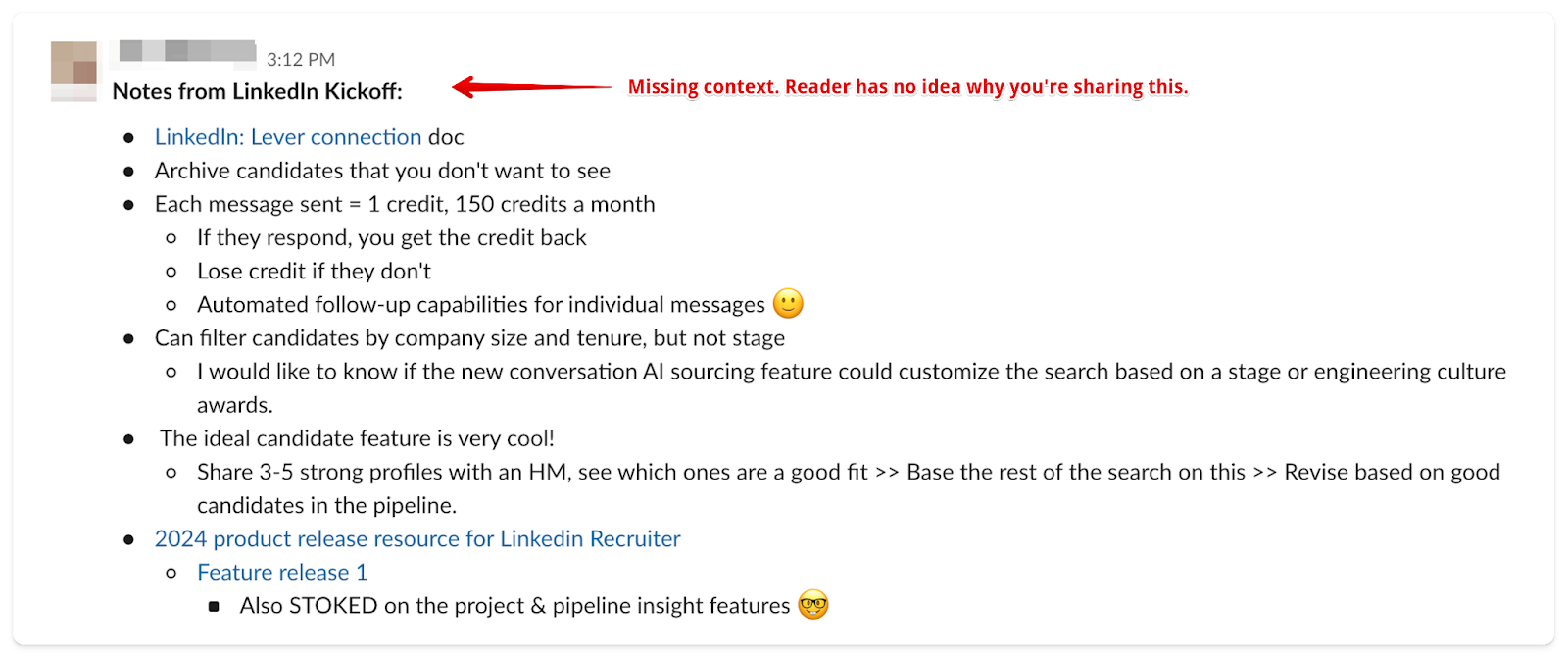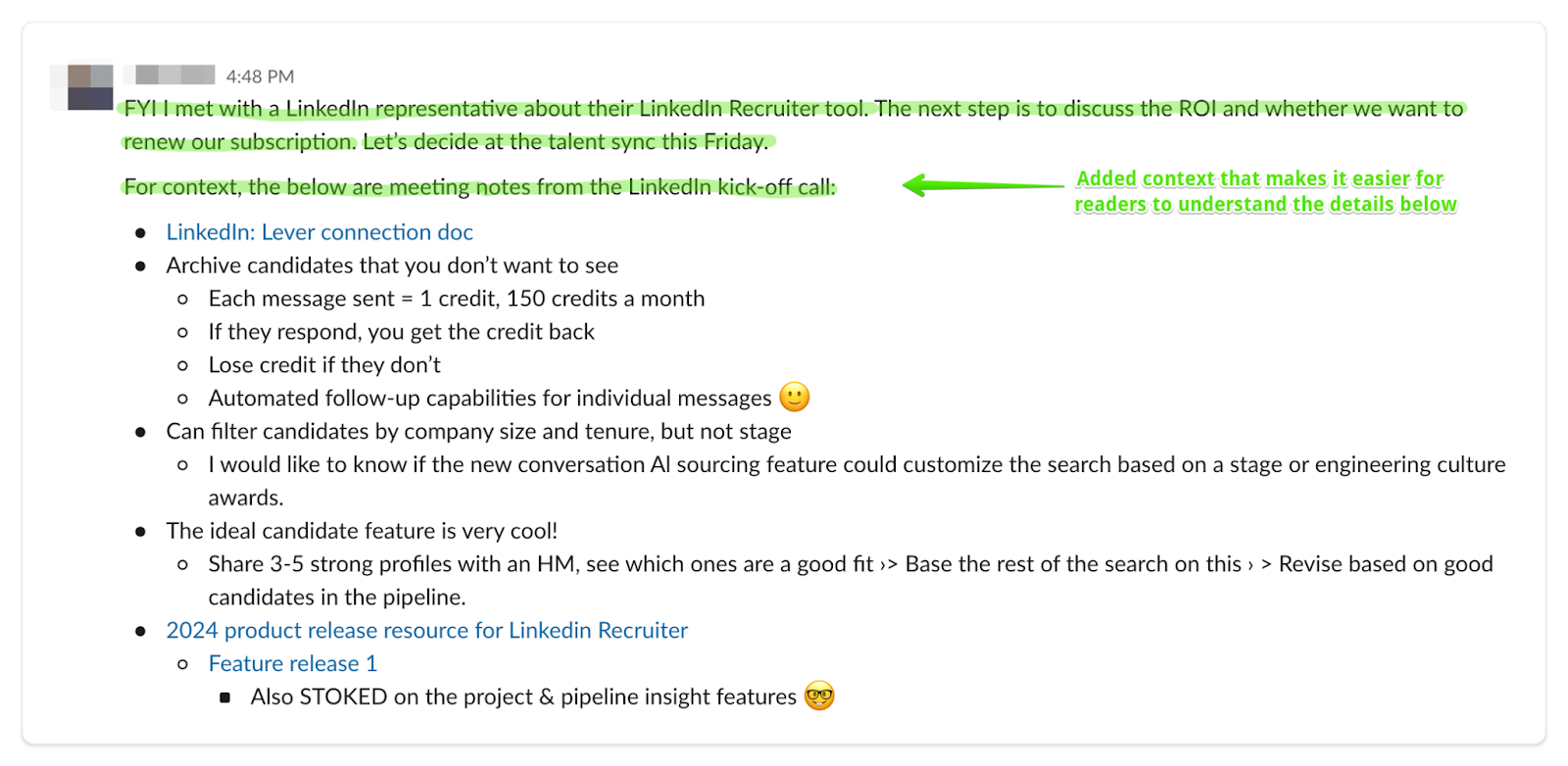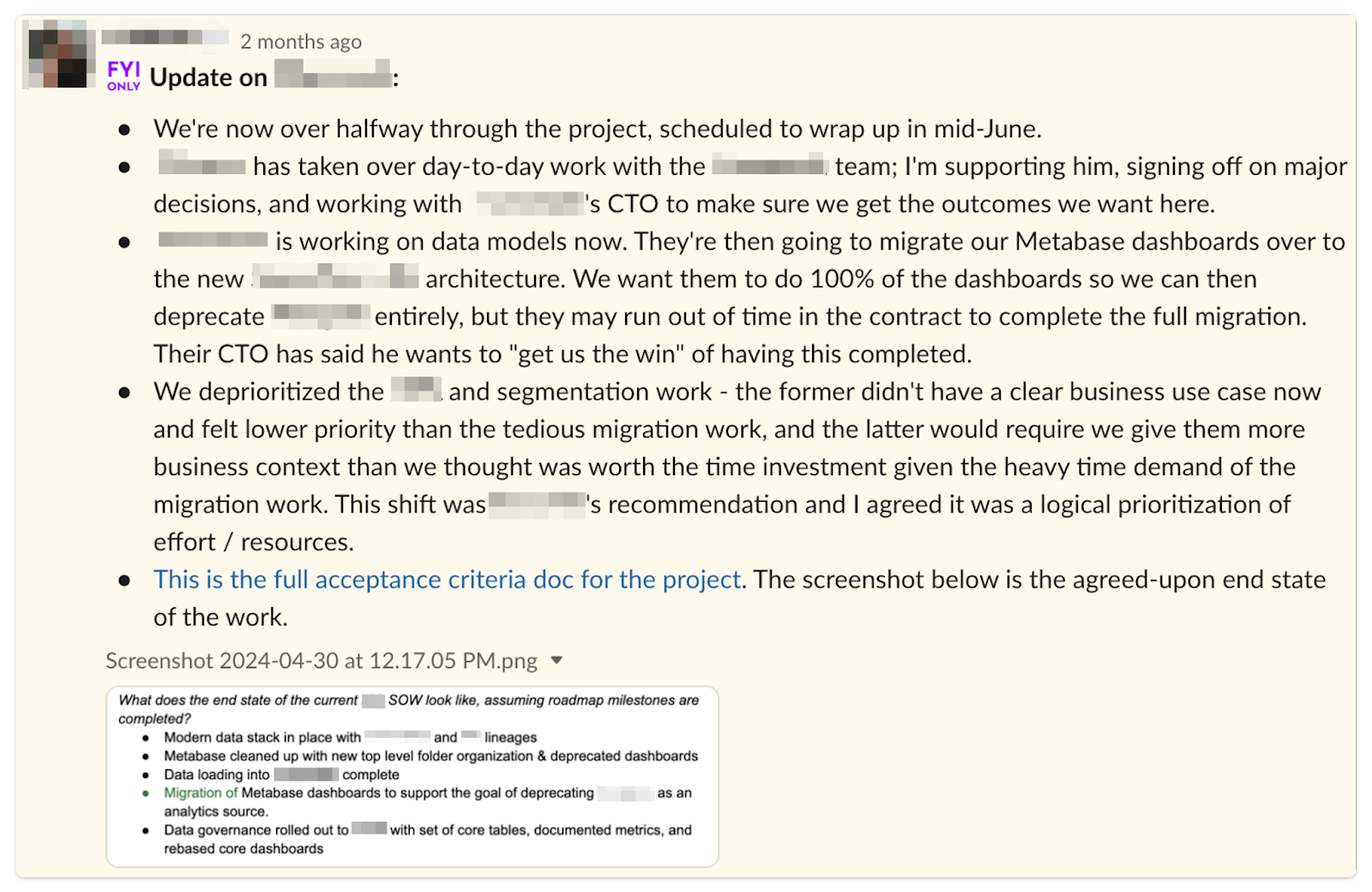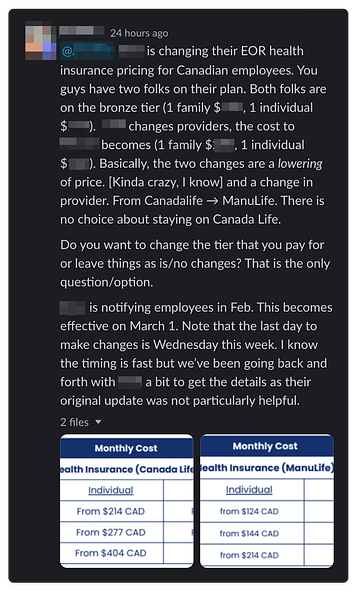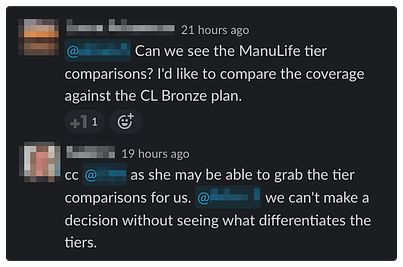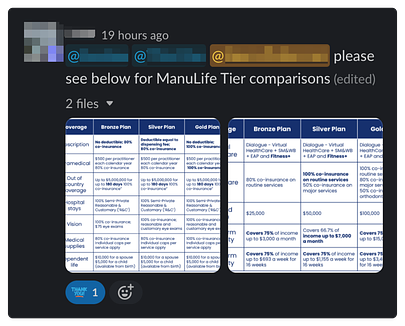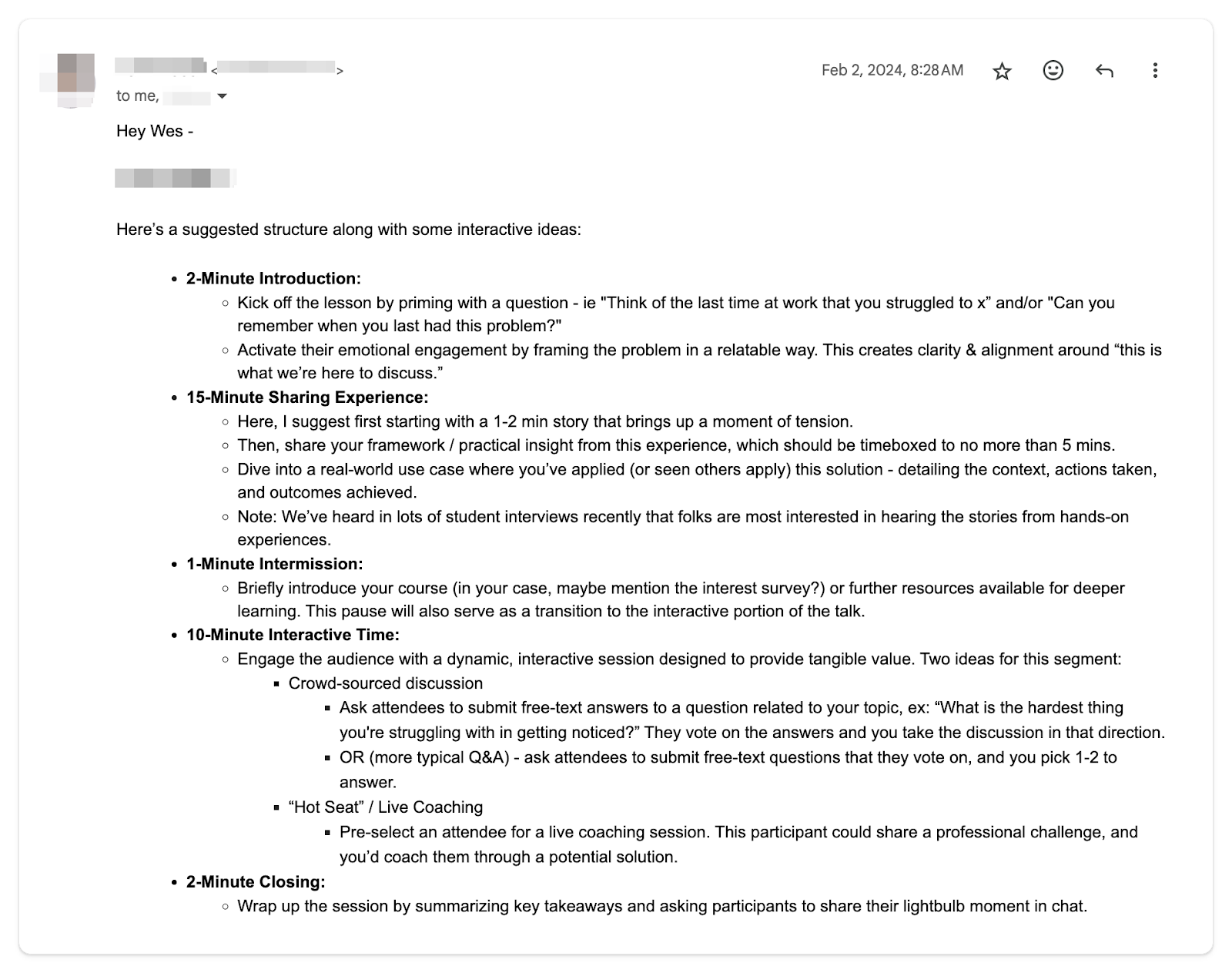Too detailed in the wrong ways, not detailed enough in the right ways
Too detailed in the wrong ways, not detailed enough in the right waysDetails aren’t the problem. The problem is too many of the wrong details. Here are 5 real-life examples, so you can watch out for this in your own work.👋 Hey, it’s Wes. Welcome to my weekly newsletter on managing up, career growth, and standing out as a high-performer. ✨ Announcement: I’m thrilled to share that I’m building a course. Since launching this newsletter last fall, and working with 1:1 coaching clients earlier this year, I’ve gotten many requests from folks asking about opportunities to learn directly from me and go deeper into the meaty topics I cover here. I want to build the most action-packed, high-value course possible for you. This first cohort will be smaller, and an excellent opportunity to shape the course for all future students. If you’re interested in learning more and sharing feedback, please fill out this form. In this week’s newsletter, you’ll learn about common mistakes when sharing details, and how to increase the likelihood you share the right amount of context.
Read time: 10 minutes “This is too detailed.” You’ve likely heard this from a manager or executive you were presenting to. When you heard that, you might have come to this (mistaken) conclusion: Details are bad, and I should be as high-level as possible all the time because people don’t have time for or want to hear details. That’s a dangerous over-simplification. A detail is simply a fact, data point, words, or piece of information. By itself, it is neutral. It’s not good or bad. Details aren’t the problem. The problem is too many of the wrong details. Too detailed in the wrong way, not detailed enough in the right way is highly situational. A detail in a certain context might be too much. But change the setting, and that same detail could become appropriate. Why does being detailed in the right way matter? Because every detail adds cognitive load. Cognitive load means friction. And friction prevents people from doing what you want them to do. The wrong details slow you down and create confusion. The right details advance the conversation, create deeper understanding, and lead to more productive discussions. When we talk about something being too detailed in the wrong way, we’re talking about a mismatch between your goal, audience, situation, and the level and type of details you’re sharing. This is why if I see a random memo without context, it’s really hard for me to tell if it’s too detailed or not. I don’t know how much the original audience knew, or what the setting for that conversation was. Given how context-dependent this is, I believe the best way to show you this concept is to share a bunch of examples. This way, you can train your eye to notice patterns. Notice what these notes do or don’t do, and the underlying principles, so you can apply it to your own work. A note: It’s extremely hard to find examples that still make sense after anonymizing and redacting. Some of these examples are of more tactical topics where I can share the content openly, but this framework applies to strategic writing (like investor updates, quarterly strategy docs, proposals) and verbal communication (explaining your ideas in a 1:1, team meeting, group discussion). Let’s dive in. Part I: Being too detailed in the wrong waysExample 1: Too many numbersIn my post on “How I give the right amount of context (in any situation)” I share this example:
Notice how too many numbers are distracting: cohort 1, May 13, 6 weeks, August 1, cohort 2, October 7, 10 days. Numbers attract the eye, but too many of them add cognitive load—it’s hard to tell what numbers to pay attention to. The numbers above were dates, but you’ve probably seen this with metrics too. Often, junior folks will present updates and name EVERY metric without any narrative arc. There’s no connective tissue. There’s no meaning to the numbers. It’s simply rattling off numbers to cover their bases.
Your ultimate goal is to help your audience make sense of information. This means picking and choosing which numbers to share, based on what you’re noticing in the business and the story you want to tell. Example 2: Jumping straight into detailsThis note was shared with me by my client who is Head of Operations at a healthcare tech startup. It’s a note from their former direct report, a talent lead: My client said:
My take: The note jumped straight into the details without providing any context. My client got this random message and didn’t know what it was for. I had to read it multiple times to try to make sense of it, which is a bad sign. This is a classic example of notes that are meant for the note-taker vs meant to be read by others. (This is a pet peeve of mine.) Just offering notes can be totally fine—for example, if you’re taking notes for team members who couldn’t attend a meeting. But you need to write with intention. Here’s how I would rewrite this:
Notice how a simple few lines make those details seem more relevant and purposeful. You show you’re focused on next steps, and offer a timeline. When you frame upfront, your audience is able to better digest (and appreciate) the details you share. Another thought: Usually, sharing only notes is not that helpful, especially with AI tools that now do much of this. It’s more valuable to share notes AND your takeaways, analysis, and insights. Example 3: Too much technical detailMy client write the note above, and said:
I think their self-analysis is spot on. I redacted most of the technical tools for their privacy, but basically they mentioned lots of technical aspects without mentioning what it means. When you read this, it’s full of information…but you don’t get a clear sense of how the project is going, or the impact of any of the decisions above. There aren’t many insights on potential risks or learnings. There’s not much to react to, period. Don’t skimp on the meaty stuff that helps your reader make meaning and comprehend the situation. Example 4: Failing to include details necessary for the decisionThis is a note from an HR agency we used at Maven. The note is decent. The screenshot is on mobile, so it’s concise and dense with useful information—it just looks longer because of the narrower form factor of mobile. But it’s lacking one important “detail”... We (the brand/client) can’t make a decision about whether to change healthcare plans unless we see the plans. So the next obvious question was: “Can we see the tier comparisons?” The person should have included this information to begin with. It would have saved one cycle of follow-up, and allowed us to move faster. Proactively give people what they need to make a decision. Example 5: Misreading the task at handI was doing a Maven lightning talk a few months ago, and asked my former direct report to help suggest ideas for the scope of my talk. My title was “Stand out as a high-performing individual contributor,” and I wanted a thought partner to figure out what to focus on in my 30-minute slot. They sent the below email over: I didn’t need a minute-by-minute breakdown, or general ideas on interactivity. Nothing in this note is specific to my topic, which makes it less relevant and valuable. Make sure you understand the assignment before you dive into it. If you write the best run-of-show agenda for someone who doesn’t need that, then you missed the mark regardless of how good your execution was. Which brings me to an important point… We are ALL susceptible to being too detailed in the wrong ways sometimes. No one is immune. No one is exempt. The operator above is usually very good at giving the right level of detail. I’ve seen it across dozens of interactions with internal and external stakeholders. But she was still too detailed in the wrong way for this particular situation. It’s happened to me many times. It’s likely happened to you in the past, and will likely happen in the future—although hopefully less now that you are aware of this concept. Don’t beat yourself up about it. In my experience, you can’t completely prevent this from happening. Be grateful that you realized it or someone pointed it out to you, update your mental model, and keep moving forward. Part II: How to decide what details to includeBy now, you might have realized that sharing the right amount of detail actually takes an enormous amount of judgment. It requires you to accurately read a situation, assert the level of existing knowledge your stakeholders have, assess whether this is the right time and place to share various pieces of information—all in real-time. No wonder this takes practice. To get you started, here are questions to ask yourself:
Over time, you develop muscle memory—and I believe you can begin to develop it and start seeing results rather quickly. One day, you’ll realize that it’s second nature to share certain details but not others. You’ll be able to sense what’s needed and respond well intuitively. A few other thoughts to keep in mind:
Now that you have the shared vocabulary of “too detailed in the wrong ways, not detailed enough in the right ways,” you can point this out in your own work and for your peers. Keep your eye out for it, and let me know how it goes. Have you ever been too detailed in the wrong way? Have you read memos from others that were like this? Hit reply because I’d love to hear from you. Thanks for being here, and I’ll see you next Wednesday at 8am ET. Wes PS Here are more ways to connect:
|
Older messages
Managers, be explicit about what you need from your team
Wednesday, July 24, 2024
Sometimes you want to let your team figure things out via trial and error, and other times, it's faster and better for everyone if you point out what you're looking for. ͏ ͏ ͏ ͏ ͏ ͏ ͏ ͏ ͏ ͏ ͏ ͏
Talking to vs about customers
Wednesday, July 17, 2024
Are you talking to your customers, or to fellow founders and marketers? The difference is subtle but it makes a big impact. Be clear on who you're speaking to in your customer-facing messaging. ͏ ͏
Playing defense: How to control the narrative if your work is being questioned
Thursday, July 11, 2024
No matter how well you frame your ideas upfront, there will be times when you'll need to address skepticism and defend your work. These are moments when you can shine. Here's how. ͏ ͏ ͏ ͏ ͏ ͏ ͏
Sales, not logistics
Wednesday, July 3, 2024
That note you're writing? It's probably a sales note in some capacity. Don't jump straight into the logistics if your recipient isn't sold yet. ͏ ͏ ͏ ͏ ͏ ͏ ͏ ͏ ͏ ͏ ͏ ͏ ͏ ͏ ͏ ͏ ͏ ͏ ͏ ͏ ͏
The OARB framework: Why appealing to self-interest is better for everyone
Wednesday, June 26, 2024
You must give your recipient a reason to change. Go straight for what will hit them in the gut: appeal to why they'll personally benefit. ͏ ͏ ͏ ͏ ͏ ͏ ͏ ͏ ͏ ͏ ͏ ͏ ͏ ͏ ͏ ͏ ͏ ͏ ͏ ͏ ͏ ͏ ͏ ͏ ͏ ͏ ͏ ͏ ͏ ͏
You Might Also Like
🚀 Ready to scale? Apply now for the TinySeed SaaS Accelerator
Friday, February 14, 2025
What could $120K+ in funding do for your business?
📂 How to find a technical cofounder
Friday, February 14, 2025
If you're a marketer looking to become a founder, this newsletter is for you. Starting a startup alone is hard. Very hard. Even as someone who learned to code, I still believe that the
AI Impact Curves
Friday, February 14, 2025
Tomasz Tunguz Venture Capitalist If you were forwarded this newsletter, and you'd like to receive it in the future, subscribe here. AI Impact Curves What is the impact of AI across different
15 Silicon Valley Startups Raised $302 Million - Week of February 10, 2025
Friday, February 14, 2025
💕 AI's Power Couple 💰 How Stablecoins Could Drive the Dollar 🚚 USPS Halts China Inbound Packages for 12 Hours 💲 No One Knows How to Price AI Tools 💰 Blackrock & G42 on Financing AI
The Rewrite and Hybrid Favoritism 🤫
Friday, February 14, 2025
Dogs, Yay. Humans, Nay͏ ͏ ͏ ͏ ͏ ͏ ͏ ͏ ͏ ͏ ͏ ͏ ͏ ͏ ͏ ͏ ͏ ͏ ͏ ͏ ͏ ͏ ͏ ͏ ͏ ͏ ͏ ͏ ͏ ͏ ͏ ͏ ͏ ͏ ͏ ͏ ͏ ͏ ͏ ͏ ͏ ͏ ͏ ͏ ͏ ͏ ͏ ͏ ͏ ͏ ͏ ͏ ͏ ͏ ͏ ͏ ͏ ͏ ͏ ͏
🦄 AI product creation marketplace
Friday, February 14, 2025
Arcade is an AI-powered platform and marketplace that lets you design and create custom products, like jewelry.
Crazy week
Friday, February 14, 2025
Crazy week. ͏ ͏ ͏ ͏ ͏ ͏ ͏ ͏ ͏ ͏ ͏ ͏ ͏ ͏ ͏ ͏ ͏ ͏ ͏ ͏ ͏ ͏ ͏ ͏ ͏ ͏ ͏ ͏ ͏ ͏ ͏ ͏ ͏ ͏ ͏ ͏ ͏ ͏ ͏ ͏ ͏ ͏ ͏ ͏ ͏ ͏ ͏ ͏ ͏ ͏ ͏ ͏ ͏ ͏ ͏ ͏ ͏ ͏ ͏ ͏ ͏ ͏ ͏ ͏ ͏ ͏ ͏ ͏ ͏ ͏ ͏ ͏ ͏ ͏ ͏ ͏ ͏ ͏ ͏ ͏ ͏ ͏ ͏ ͏ ͏ ͏ ͏ ͏ ͏ ͏ ͏ ͏ ͏ ͏ ͏
join me: 6 trends shaping the AI landscape in 2025
Friday, February 14, 2025
this is tomorrow Hi there, Isabelle here, Senior Editor & Analyst at CB Insights. Tomorrow, I'll be breaking down the biggest shifts in AI – from the M&A surge to the deals fueling the
Six Startups to Watch
Friday, February 14, 2025
AI wrappers, DNA sequencing, fintech super-apps, and more. ͏ ͏ ͏ ͏ ͏ ͏ ͏ ͏ ͏ ͏ ͏ ͏ ͏ ͏ ͏ ͏ ͏ ͏ ͏ ͏ ͏ ͏ ͏ ͏ ͏ ͏ ͏ ͏ ͏ ͏ ͏ ͏ ͏ ͏ ͏ ͏ ͏ ͏ ͏ ͏ ͏ ͏ ͏ ͏ ͏ ͏ ͏ ͏ ͏ ͏ ͏ ͏ ͏ ͏ ͏ ͏ ͏ ͏ ͏ ͏ ͏ ͏ ͏ ͏ ͏ ͏ ͏ ͏ ͏ ͏ ͏
How Will AI-Native Games Work? Well, Now We Know.
Friday, February 14, 2025
A Deep Dive Into Simcluster ͏ ͏ ͏ ͏ ͏ ͏ ͏ ͏ ͏ ͏ ͏ ͏ ͏ ͏ ͏ ͏ ͏ ͏ ͏ ͏ ͏ ͏ ͏ ͏ ͏ ͏ ͏ ͏ ͏ ͏ ͏ ͏ ͏ ͏ ͏ ͏ ͏ ͏ ͏ ͏ ͏ ͏ ͏ ͏ ͏ ͏ ͏ ͏ ͏ ͏ ͏ ͏ ͏ ͏ ͏ ͏ ͏ ͏ ͏ ͏ ͏ ͏ ͏ ͏ ͏ ͏ ͏ ͏ ͏ ͏ ͏ ͏ ͏ ͏ ͏ ͏ ͏ ͏ ͏ ͏ ͏ ͏ ͏ ͏ ͏ ͏ ͏
